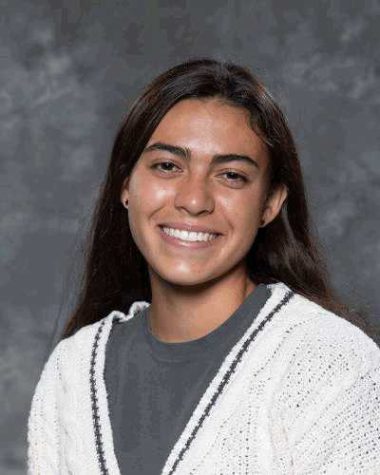Covid Creations
August 28, 2020
As weeks in isolation stretched to months, Skylar Liu ’21, normally a prolific painter, found herself struggling to find inspiration. Nevertheless, Liu said art has always helped her find solace, and for that reason, she pushed herself to focus on tactile art forms.
After the resurgence of the Black Lives Matter movement in June, she learned that she could sell her work online to contribute to a greater cause, all while building connections with her peers.
Visual arts teacher Conor Thompson said that while the past few months have proven a challenge for many, students can shed a positive light on their social distancing experiences by utilizing their creativity as an outlet for expression.
“From the start of lockdown last spring, I emphasized that art can be a salve in troubled times and that the parameters of lockdown create unique opportunities for creativity,” Thompson said. “I am an optimist, as naive as it sounds in 2020, and I have observed the silver linings of [COVID-19] for my art students. Students have more privacy to create artwork, they can learn to use the limitations of working from home to be resourceful and they have an alternative mode of communication to express hard feelings about living through these times.”
Thompson said that students may benefit from their isolation by focusing on creating art at home and using their talents to bridge the social gap between themselves and their peers.
In light of both the pandemic and the current movement for racial equality, Thompson said students have found ways to tackle internal and external conflicts in their communities through self-expression.
Liu said she appreciates that students have utilized art as a form of activism within the community.
“Art has been used as a tool to influence or to advocate [for] social issues for centuries, so it definitely has the ability to tackle today’s issues, too,” Liu said. “I think both documentation and more abstracted art are important for spreading awareness and advocating for movements like Black Lives Matter. Art might be personal for the artist, but their struggles are often a reflection of society’s current issues. I’ve definitely seen an increase in artwork that is meant to be a work of activism or a protest, and I think a lot of art created during this time, whether the artist is conscious of it or not, will be reflective on issues of race, isolation and survival or will depict feelings of uncertainty and loneliness. Art is very much a language, so I think it’s a great way to communicate and advocate for causes.”
Ash Wright ’22 said she uses social media platforms to initiate change by advocating and raising money for organizations supporting the Black Lives Matter movement.
“One way that I’ve been using art as a catalyst for change is through Student Art Activists, an account started by some students at Harvard-Westlake, where we all create and donate both our own art and that of other artists around the U.S., creating this platform where we use our talents for change,” Wright said. “Another way I have seen art used for change is people who are good at digital art or graphic design creating infographics online, which is another really helpful way to share information in a more succinct manner.”
Liu said that now more than ever, the media should work toward diversifying art and making it more accessible to the public.
“Now that many museums and galleries are closed to the public, social media and the internet are important to sharing art and making it accessible,” Liu said. “In addition to showcasing artwork that aims to tackle themes of racism and injustice, I think it is really important for galleries and museums to highlight works done by people of color. I have seen this sort of activist art spread to Instagram and other social media apps, which encourages people to continue partaking in the Black Lives Matter movement.”
Visual arts faculty members have expressed their support of new student platforms that have worked to catalyze change within the school community.
Thompson discussed the pride he experienced upon learning about students who are utilizing their artistic abilities to raise awareness and advocate for the Black Lives Matter movement.
“I was so impressed when my students proactively developed a program to raise awareness and funds for social justice causes,” Thompson said. “Student Art Activists became a platform for engendering real change. Art can be both a solitary act of contemplation and a powerful tool for community engagement, and these times have revealed [to me] both aspects for Harvard-Westlake students.”
Visual Arts Department Head Gustavo Godoy said that despite the challenges the pandemic poses to the school community, students continue to remind him of the significant role art plays in one’s social consciousness.
“I often say that being an artist is a luxury in our society, but [it is] also a responsibility to be taken seriously, [as well as] a dynamic political act,” Godoy said. “Art that is activated in the way that Student Art Activists have done can be meaningful for what the artist is saying within each piece and also for the effect the act of creating can have as a form of protest. Art can become precious, and for all of these artists to donate the work in this way is such a beautiful and generous gesture. It would be so easy to remain silent, and our students chose to be voices for justice.”





























